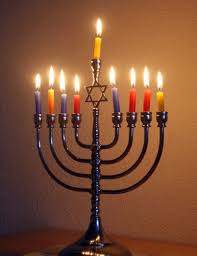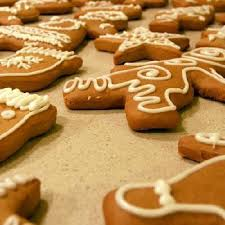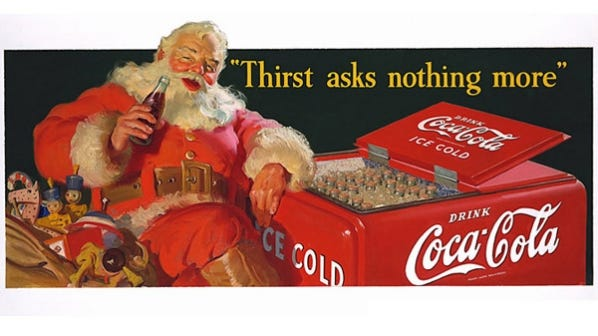
With autumn gone, winter is quickly moving in, bringing a northern chill and the hopes of snow. With that comes warmth in celebrations, homes, and hearts, combating the single digit temperatures.
Many major holidays are prevalent in the winter season, which lasts from December first to March 20th. Christmas Eve, Christmas, New Years Eve, New Years Day, Valentines day Kwanzaa, Boxing Day, St. Lucia Day, Hanukkah, and the Chinese New Year are some of the largest ones people around the world celebrate.
Christmas Eve:
A prerequisite for Christmas day, Christmas Eve is a time to dig into the religious significance of the baby Jesus possibly being born at midnight while marking the end of the Advent season. While there aren’t any specific traditions, it’s a time for families to reunite, light the fireplace, and spend quality time together before the hecticness of Christmas day.
Christmas:
Christmas is a Christian and Catholic holiday that celebrates the birth of Jesus. Lots of history comes from the Bible, which details why Jesus was born in a manger, how the wisemen followed the star, and how Mary came to have him in the first place.
As soon as November begins, Christmas symbols and colors begin spreading like wildfire. Whether Americanized and pagan, or religious, popular emblems include snowmen, ornaments, snow globes, reindeer, poinsettias, presents, stockings, candy canes, and snowflakes.
Christmas is often counted down through the use of Advent calendars, which involve a small present on the days leading up to Christmas. Other variations include religious ones where you flip a character part of the Nativity (the birth of Jesus).
Santa Claus and his reindeer are a huge part of Christmas traditions, with kids all over the world waiting anxiously for him to deliver gifts. Despite this being a myth, Saint Nicholas was the patron saint of sailors, merchants, repentant thieves, children, brewers, unmarried people, students, and more, who sought to bring generosity and blessings for all. He often left gifts of citrus fruits in shoes outside, contributing to the idea of opening stockings on Christmas morning.
There is a belief centered around the “Christmas spirit,” focused on finding the joy and bringing out the good in everyone. This contradicts the grumpy Scrooge from Charles Dickens’ “A Christmas Carol,” the people who say “Bah humbug,” and close their doors while shutting off their hearts. It’s important to remember that some people aren’t as fortunate and can’t remember the last time they had a festive Christmas, so donate to local charities and shelters to ensure happiness.
Popular traditions include gifting and opening presents, stockings, enjoying classic games such as bingo or opening candy wrapped in bubble wrap, and feasting on holiday foods.
-
A decorated Christmas tree can bring light and festivity to previously dull spaces, as well as act as a great source of entertainment.
'
-
Santa Claus is a popular Christmas character and is often featured on decor, like this sign.
'
-
Nutcrackers, originating from late-17th-century Germany, are a unique way to decorate for winter. They’ve become synonymous with the classic ballet, “The Nutcracker,” where a young girl named Clara receives a gift of a nutcracker.
'
Kwanzaa:
Kwanzaa is an African holiday celebrated from Dec. 26 to Jan. 1 that allows families to gather under one roof while remembering their cultural heritage. Founded in 1966 by Maulana Ron Karenga, a professor of Africana Studies at California State University, Kwanzaa is centered around seven core communitarian Swahili values called the Nguzo Saba, or Seven Principles: Umoja- unity, Kujichagulia- self-determination, Ujima- cooperative economics, Ujamaa- collective work and responsibility, Nia- purpose, Kuumba- creativity, and Imani- faith. Its name is taken from the Swahili phrase, “Matunda ya kwanza,” meaning “first fruits,” based on the ancient celebrations, but an extra a is added to accommodate one letter for each of the seven children present at the early feast. Seven symbols of the holiday include fruits, vegetables, and nuts; a straw mat; a candleholder; maize; gifts; a communal cup; and seven candles in the African colors of red, green, and black. Families light one of the candles every day, and discuss the appropriate principle.
Meals have a large role in celebrating Kwanzaa, as special African-American dishes are served throughout the week. On Kuumba, a large feast called Karamu is held, featuring traditional African dishes and clothing.
Boxing Day:
Celebrated in Great Britain and Commonwealth countries (primarily New Zealand, Australia, and Canada), Boxing Day centers around sports and shopping, although once was a time for servants, tradespeople, and the poor to receive gifts. Some believe the name is derived from the opening of the alms boxes placed in churches to collect donations for the poor, while some think it represents gifts given to employees on the day after Christmas, as their work was needed on Christmas day. The following day, December 26, is designated as the official public holiday and the feast of Saint Stephen, the patron saint of horses. Using this logic, people have named Boxing Day the time for fox hunting, horse races, and rugby.
Chinese New Year:
The Chinese New Year, sometimes called the Lunar New Year, is a 15-day festival beginning on the new moon and lasting sometime between Jan. 21 to Feb. 20. are given seven days of rest called Spring Festival. It marks the beginning of a new zodiac calendar, and comes from the legend of Nian, a terrifying beast that would present itself every Lunar New Year’s eve to cause chaos. However, a villager discovered it was afraid of the color red and loud noises, which is why firecrackers and scarlet decorations are prevalent today. People in China also believe in three common taboos: cleaning before the fifth day, using sharp objects, and breaking ceramics or glass. If they avoid these at all costs, they won’t break the flow of wealth and good luck for the coming year. Red envelopes with money are given, dinners are held, and visits are made to temples.
-
Gorgeous lanterns in the shape of flowers are floating on a pond. Photo credit: Fefe Ho
'
After, a lantern festival is held, which commemorates the end of the Lunar New Year with star gazing, riddles, lion/dragon dancing, elaborate costumes, stilt performers, lantern lighting, and eating rice dumplings. It’s a social holiday with feasts for in-laws and floods of people celebrating on the streets. In ancient China, women weren’t allowed to venture out of the house, but on this night, referred to as the true Chinese Valentine’s Day, romantic and wild stories were heard. Additionally, more than 2000 years ago, Emperor Wu’s reign was a time of civil unrest and conflict, but when a new Emperor Wen arrived, he made Jan. 15 a national holiday to restore peace through lantern lighting. However, it also became a pagan holiday for ancient Chinese paganism and Buddhism due to Emperor Ming.
Overall, it’s a time for families to gather and partake in rituals and celebrations while anticipating good luck.
St. Lucia Day:
St. Lucia Day is a festival of lights in Sweden, Norway, and the Swedish-speaking parts of Finland to honor St. Lucia, one of the first Christian martyrs persecuted by the Catholic Romans for her beliefs and for smuggling food to captured Christians. A procession of boys and girls in white wearing candle wreaths atop their heads singing traditional songs follows an elected woman who acts as St. Lucia for their town. The eldest daughter also dresses in ivory with a cinched red waist ribbon while serving coffee, lussekatter (saffron bread), and pepparkakor (ginger biscuits) to family and visitors in the morning.
-
A procession of young girls reenact how the oldest Swedish daughter brings her family traditional sweets early in the morning wearing a lit crown to symbolize hope in the darkness of the early morning. Photo credit: Bengt Nyman on WikiMedia
'
The festival marks the beginning of the Christmas season and acts as hope. Ancient Scandinavians used to light bonfires to scare evil spirits away, although not all were frightful. Some believe a female demon drifted through Norway on Dec. 13 to make sure preparations were in place.
Hanukkah/Chanukah:
Chanukah, more commonly known as Hanukkah, is the eight-day Jewish celebration of lights that comes from the Hebrew word “Chanukah,” meaning “dedication.” As the story goes, the Holy Land was ruled by the Seleucids (Syrian-Greeks), who were actively forcing their religion on the Jews. In protest, a small army of Jews defeated a much larger army, drove the Greeks from the land, and reclaimed the temple. They found a leftover lamp containing a days’ worth of olive oil while trying to light the menorah (the seven-pronged candle), but it miraculously lasted for eight days, until pure oil could be obtained.
-
A Chanukah menorah has nine candles, with one to light the other eight. Photo credit: 39james on WikiMedia
'
When family gets together, celebrations are still centered around lighting the menorah today, which has nine flames, one to light the other eight. Prayers and special blessings are usually recited while igniting the fire. The dreidel is a common household game that involves a four-sided die with the Hebrew letters: nun, gimmel, hei, and sin, an acronym for nes gadol hayah sham, “a great miracle happened there.” It’s usually played with a prize of some sorts, whether coins, nuts, or other objects. Even if players don’t win coins during the game, Chanukah gelt is often rewarded for positive behavior, as well as to give children the opportunity to donate tzedakah, charity.
Traditionally, Chanukah foods are fried in oil to commemorate the temple menorah. The Eastern-European potato latke is a widely popular cake garnished with sour cream or applesauce, while a jelly-filled sufganyah is a sweet treat.
New Years Eve:
New Years Eve is a prerequisite for New Years Day, where flashy lights and the sounds of nightclubs can be heard from miles away. Whether in a yacht, hotel, bar, or other party scene, you can find plenty of people having a good time drinking or laughing with friends.
The big event is the New York ball drop, broadcasted on live television for the world to watch. Despite different time zones, the event is an official symbol that midnight has come, marking a new day.
New Year’s Day:
New Year’s Day marks the start of a new year and a fresh beginning. It’s often filled with promises of resolutions that are quickly forgotten or tossed to the side. Quitting alcohol or smoking, eating healthier, and improving mental health are common goals.
-
The New Years Eve ball drop in New York City is the main event that symbolizes the official new year. Photo credit: SimonPix on WikiMedia
'
Valentine’s Day:
A time for lovebirds and cupids alike, Valentine’s Day allows people to spend quality time with their significant others and take time to appreciate all that they do. Gifts such as flowers, stuffed animals, jewelry, and chocolate are exchanged, with an emphasis on staying true to the day’s theme: pink and red. Hearts can be found on every poster and advertisement, as the holiday is dedicated to Saint Valentine, a martyr killed by the Emperor Claudius for not only performing secret weddings, but also healing his captor’s blind daughter, thus prompting the family to convert to Christianity.
Many people don’t know that there was another man named Valentine also associated with healing, who got decapitated on the same day, Feb. 14. Scholars don’t have much evidence for these theories, but they do know that Valentine’s day became associated with love by the English poet Geoffrey Chaucer.
Although there isn’t much of a romantic backstory, Valentine’s blood can be correlated with the red and love seen on Valentine’s day.
Solstice:
The winter solstice marks the shortest day of the year but brings the hope of more sunlight. Usually occurring on Dec. 21 or 22, it’s the exact moment when half of the Earth is tilted the furthest distance from the sun.
The winter season has multiple aesthetics that are taken from different events and environments. Silvery winter is a popular choice, which is inspired by icicles hanging off of frozen branches and frost glittering on the ground. Animals such as birds, foxes, and rabbits are often associated with this vision of a wintry forest. Shades of light blue and white can be adopted to give off a frigid, peaceful atmosphere.
Snowy pine forests are common in the northern hemisphere and are often representations of winter. In this aesthetic, dark greens contrast with bright whites, with cobalt hues being found in the sky, reflecting off the landscape, and occasionally in the trees. Snowbanks are numerous and creatures suited for cold forests like deer, elk, rabbits, and bears are evident, with plenty of ruby-red berries and pinecones juxtaposed with emerald trees for them to snack on.
For a more natural, farmhouse style, opt for neutrals like beige, tan, sage, and light browns. Rustic bells, candle holders, and candles can bring a touch of joviality while keeping it minimalistic. Wood touches or pinecones can incorporate the environment and maintain aesthetic appeal.
Since Christmas is such a major holiday, red, green, and gold are found everywhere. Bells, holly, and/or mistletoe can be hung to bring a touch of festivity, and no matter the size or material, lit Christmas trees bring joy to homes or office spaces. Whether decorated with matching ornaments or with sentimental ones, seeing the string lights beaming in the darkness symbolizes hope in the chilly season. Touches of coziness can be incorporated into stockings hung by crackling fireplaces, thick throw blankets, or Christmas mugs in the kitchen. Garland, whether natural-looking or tinsel-like, can be wrapped around banisters, across windows, or strung across archways to fully capture the Christmas spirit.
There are so many options for decorations, from statues to signs, that homes become cluttered. Pick out the unnecessary decorations and don’t be afraid to let go.
-
A large wreath decorated with lights and pinecones brings a festive air hung over a fireplace, and contrasts the stone.
'
-
Fake garland can bring nature into homes without the risk of little creatures making their way inside.
'
-
Highlighting dark greens and bright reds through candles, flowers, and ornaments can bring out the holiday spirit without going overboard.
'
Winter has many classic scents that fill the air with holiday spirit through olfactory receptors. They entice people and often relate to popular foods. For example, gingerbread, cinnamon, hot chocolate, peppermint, and cranberry are sugary sweet. On the other hand, pine, snowfall, wood, and spices like cardamom and nutmeg are natural scents capable of floating through the air without overpowering.
Winter is the darkest season of the year in the Northern hemisphere, which is why it’s associated with depression. Despite this, the many major holidays are points to look forward to, which is why activities often lead up to celebrations in the upcoming months. Winter is also a time for comfort and warmth, where fireplaces are lit and blankets are bundled, so seek relaxation in what might seem as bleak times.

Winter has many foods traditionally associated with the season, like homemade cranberry sauce and fruitcake.
Added flavors such as are commonly found in desserts and drinks, so franchises have started offering options to bring holiday spirit and attract customers. While rich hot chocolate, a staple of every cozy winter day, is a common drink found in many coffee shops, Starbucks offers Cran-merry, sugar cookie, gingerbread, chestnut praline, caramel brulée, and peppermint coffees, lemonades, and refreshers for a festive change. Some other options are Chick-fil-A’s peppermint milkshake, Dairy Queen’s Christmas cakes, or Swig’s many drink options. Gingerbread, shortbread, toffee, pudding, and cookies are other desserts featured around this time of year. Festivity can be amplified through sprinkles, icing, or patterns. Additionally, citrus fruits, berries, and nuts can be snacked on or used to garnish plates and drinks.
On the savory side, squashes, beets, potatoes, carrots, and other root vegetables are all harvested at the beginning of winter and are easily incorporated into warm dishes, like hearty soups and stews. They make perfect winter meals capable of satisfying hunger and nutrition while tasting delicious. Noodles or rice can be added in for extra sustenance or texture.
During winter, snow falls in glistening piles, leaving ample opportunities for enjoyable activities. However, if the temperature is discouraging, there are plenty that allow just as much fun while at a tolerable temperature.
Snowball fights:
Nothing is better than pelting your friends and family with frigid balls of packed snow. Fights might even lead to elaborate snow forts and ditches built to withstand attacks, which prompts further laughter and time well spent.
Skiing/snowboarding:
In places that receive enough snowfall, strapping on skis or snowboards allows people to exercise on the slopes while having a blast. Even if it’s recreational, racing down the mountain on pathways ranging in difficulty provides a time to get away from the hustle and bustle of society.
Movies:
Watching festive movies is a great way to spend time with family and friends without the pressure to actively engage. Hallmark movies are holiday classics with romantic storylines that allow the viewer to relax, as they know it’ll be a happy ending.
Shopping:
Whether getting an early start on Christmas shopping by spending a day at the mall or finding gorgeous holiday clothing, shopping is a surefire way to increase holiday spirit, although it’ll decrease your bank account. A safer option is to go window shopping, where you view items through storefronts without intending to purchase them.
Building snowmen:
If the snow is dense enough, packing large balls and decorating a cute snowman is a creative way to embrace the weather. Give it a carrot, scarf, hat, and buttons to ensure it looks sharp, or make him stand out by adding uncommon accessories. You can even create a family of snowmen, complete with little pets!

With holidays coming up, gift shopping is a necessity for December. And why not donate an extra two cents for starving children who don’t experience the joy of Christmas, the cashier might ask you. While it’s always good to give to others, companies and stores will manipulate your empathy, otherwise known as pathos. On the other hand, flashy lights and festive colors draw attention, another marketing tactic to get customers to spend excessively.
Lots of stores offer holiday decorations and items as early as November, but the best deals come fall on the Friday and Monday after Thanksgiving, known as Black Friday and Cyber Monday, respectively. Online stores like Amazon, Etsy, and eBay offer great options for gifts and decor, but if you want to browse in-person and listen to blaring holiday tunes, Target, Walmart, Homegoods, Pottery Barn, Five Below, and Popshelf are all excellent options. Other stores like Aerie and Hollister offer clothes exclusively, while Bath and Body Works and Yankee Candle provide candles and toiletries. Teenagers, especially girls, often love receiving skincare and makeup, so check out Ulta, Sephora, or brand specific websites. Most places offer holiday deals, so make sure to keep track of those.
“10 Healthy Foods to Keep You Warm This Winter | Stamford Health.” 10 Healthy Foods to Keep You Warm This Winter, Stamford Health, 16 Feb. 2023, www.stamfordhealth.org/healthflash-blog/nutrition/healthy-winter-foods/.
“2024 New Year’s Resolutions: Nearly Half Cite Fitness as Their Top Priority.” Forbes, Forbes Magazine, 23 July 2024, www.forbes.com/health/mind/new-year-resolutions-survey-2024/.
“2025-Year of the Snake (Lunar New Year).” Chinese New Year, chinesenewyear.net/. Accessed 10 Dec. 2024.
Ali, Zeinab. “Understanding Christmas Time for People of Faith in Your Workplace.” Inclusive Employers, 28 Aug. 2024, www.inclusiveemployers.co.uk/blog/understanding-christmas-time-for-people-of-faith-in-your-workplace/#:~:text=Many%20faiths%20and%20cultures%20around,religious%20or%20non%2Dreligious%20way.
Caughey, Andrea. “How to Celebrate Santa Lucia Day the Traditional Swedish Way.” Better Homes & Gardens, Better Homes & Gardens, 31 Oct. 2024, www.bhg.com/holidays/traditions/celebrating-santa-lucia-day/.
“Boxing Day.” Encyclopædia Britannica, Encyclopædia Britannica, inc., 7 Dec. 2024, www.britannica.com/topic/Boxing-Day.
“Chinese New Year.” Encyclopædia Britannica, Encyclopædia Britannica, inc., 6 Dec. 2024, www.britannica.com/topic/Chinese-New-Year.
“Christmas Eve – December 24 – National Day Calendar.” National Day Calendar, www.nationaldaycalendar.com/national-day/christmas-eve-december-24#:~:text=Christian churches have celebrated Christmas,Nativity productions or sing carols. Accessed 2 Dec. 2024.
Dell’Amore, Christine. “What’s The Winter Solstice?” History, National Geographic Kids, 1 Dec. 2023, kids.nationalgeographic.com/history/article/winter-solstice.
Gershon, Livia. “Who Was the Real St. Valentine?” History.Com, A&E Television Networks, 9 Jan. 2019, www.history.com/news/real-st-valentine-medieval.
Ho, Fefe. “The Lantern Festival: Climax of the New Year Celebration.” Chinese New Year, 27 Sept. 2024, chinesenewyear.net/lantern-festival/.
“Kwanzaa.” Encyclopædia Britannica, Encyclopædia Britannica, inc., 22 Nov. 2024, www.britannica.com/topic/Kwanzaa.
“Kwanzaa | National Museum of African American History and Culture.” Kwanzaa, National Museum of African American History & Culture, nmaahc.si.edu/explore/initiatives/kwanzaa. Accessed 4 Dec. 2024.
Mabutas, Vincent. “Christmas Eve.” National Today, 11 Aug. 2023, nationaltoday.com/christmas-eve/#:~:text=Christmas%20Eve%20marks%20the%20end,the%20birth%20of%20Jesus%20Christ.
“What Foods Make You Think of Winter?” Quora, www.quora.com/What-foods-make-you-think-of-winter. Accessed 10 Dec. 2024.
“What Is Hanukkah?” Chabad, Chabad, www.chabad.org/holidays/chanukah/article_cdo/aid/102911/jewish/What-Is-Hanukkah.htm. Accessed 11 Dec. 2024.








